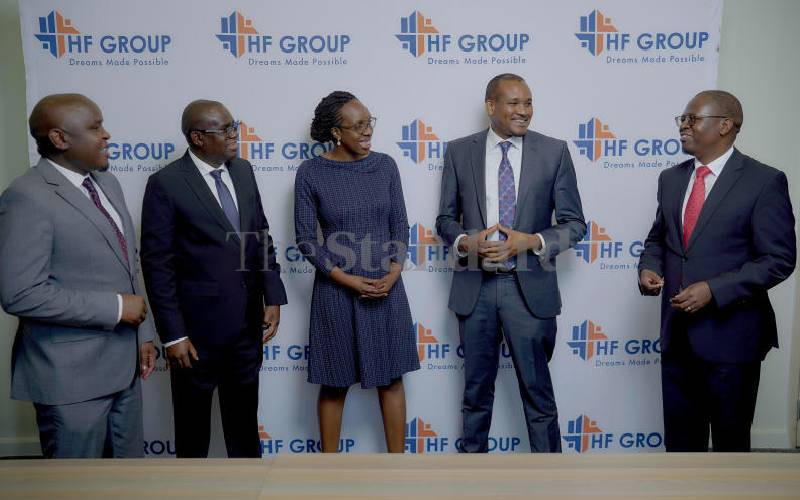 |
|
The reforms in the sector could lower risks and end fraud. |
By JACKSON OKOTH
Medical insurance, which posted the highest growth in 2012, is also the most affected sub-sector by fraudulent claims.
Industry figures by the Association of Kenya Insurers (AKI) indicate that medical insurance recorded the highest growth of 46.8 per cent, followed by engineering with 29.4 per cent.
The amount of premiums written in the medical class was Sh13.1 billion, comprising 18.3 per cent of all premiums in 2012.
AKI figures put penetration levels of medical insurance cover at 0.24 per cent of the population. This number includes those enrolled for Individual and corporate medical insurance covers.
The number, however, excludes individuals under the National Hospital Insurance Fund (NHIF).
Good life
“Apart from fraud, other factors affecting uptake of insurance products include high costs from providers leading to costly premiums which lock out majority of customers,” says Caroline Wanjiku Munene, the General Manager and Principal Officer of AAR Insurance.
She also points to the general rise in standards of living, which has seen a high percentage of the population ignoring medical insurance as they do not appreciate it as a priority.
Regulator’s figures also show that medical insurance had the highest loss ratio of 78 per cent followed by motor private at 65 per cent. Aviation had the lowest loss ratio of 16 per cent.
Six classes of insurance had loss ratios of 50 per cent and above namely public liability, 62.8 per cent, marine, 63.8 per cent, motor private, 65 per cent, motor commercial, 53.6 per cent, medical, 78.3 per cent and theft, 64.2 per cent.
In 2011, the technical loss ratio was also highest for the medical class at 83.8 per cent.
With a medical insurance portfolio of 30,000 individual members and 35,000 corporate members, AAR is putting in place measures to shield itself from losses and fraud.
“We have employed a full underwriting department, creating a platform for evaluating and vetting all policy holders.
“AAR is the pioneer of the case management department, who are qualified care assessors from the medical field to evaluate all medical admission cases ,” says Munene.
Stay informed. Subscribe to our newsletter
AAR negotiates with its providers and doctors by negotiating better rates through regular meetings and sessions.
The firm has invested in a new insurance management software, known as eOxegen.
“This is an end-to-end medical insurance management software that automates all insurance processes right from sales through to underwriting, case management, claims, settlement, re-insurance, renewal and reporting,” says Munene.
Being a web-based system, it is accessible to insurance staff, scheme administrators, corporate and retail customers, sales teams and service providers.
Monitoring tool
The new system assists in creating individual customer accounts that enable both AAR and the customers monitor utilisation of their cover in real time.
The new system also increases efficiency and transparency in operations by providing real time access to information to insurance staff, service providers and members, including online cover applications, online vetting and registration of service providers.
“The new system will also provide members with statements of cover utilisation.
“Other benefits of the system include AAR Mobile and e-mail alerts and online booking of pre-authorisation for non-emergency procedures,” says Munene.
In a bid to manage claims, AAR has put in place a health promotion programme for all members to encourage healthy living through nutritional advice through its clinic network.
This health promotion is also open to other providers.
 The Standard Group Plc is a
multi-media organization with investments in media platforms spanning newspaper
print operations, television, radio broadcasting, digital and online services. The
Standard Group is recognized as a leading multi-media house in Kenya with a key
influence in matters of national and international interest.
The Standard Group Plc is a
multi-media organization with investments in media platforms spanning newspaper
print operations, television, radio broadcasting, digital and online services. The
Standard Group is recognized as a leading multi-media house in Kenya with a key
influence in matters of national and international interest.
 The Standard Group Plc is a
multi-media organization with investments in media platforms spanning newspaper
print operations, television, radio broadcasting, digital and online services. The
Standard Group is recognized as a leading multi-media house in Kenya with a key
influence in matters of national and international interest.
The Standard Group Plc is a
multi-media organization with investments in media platforms spanning newspaper
print operations, television, radio broadcasting, digital and online services. The
Standard Group is recognized as a leading multi-media house in Kenya with a key
influence in matters of national and international interest.









